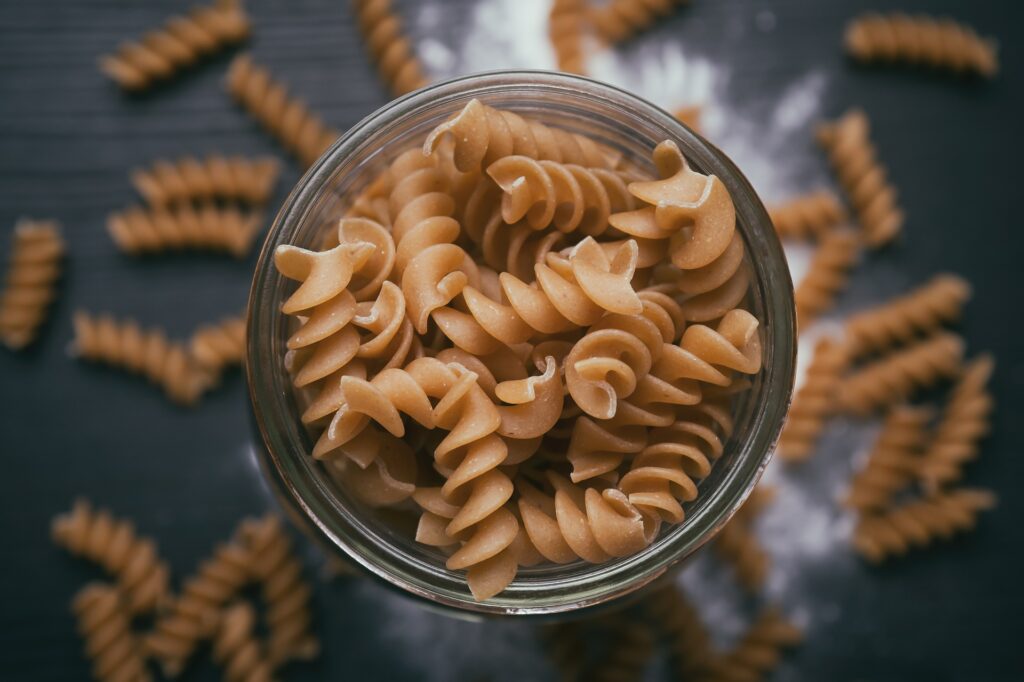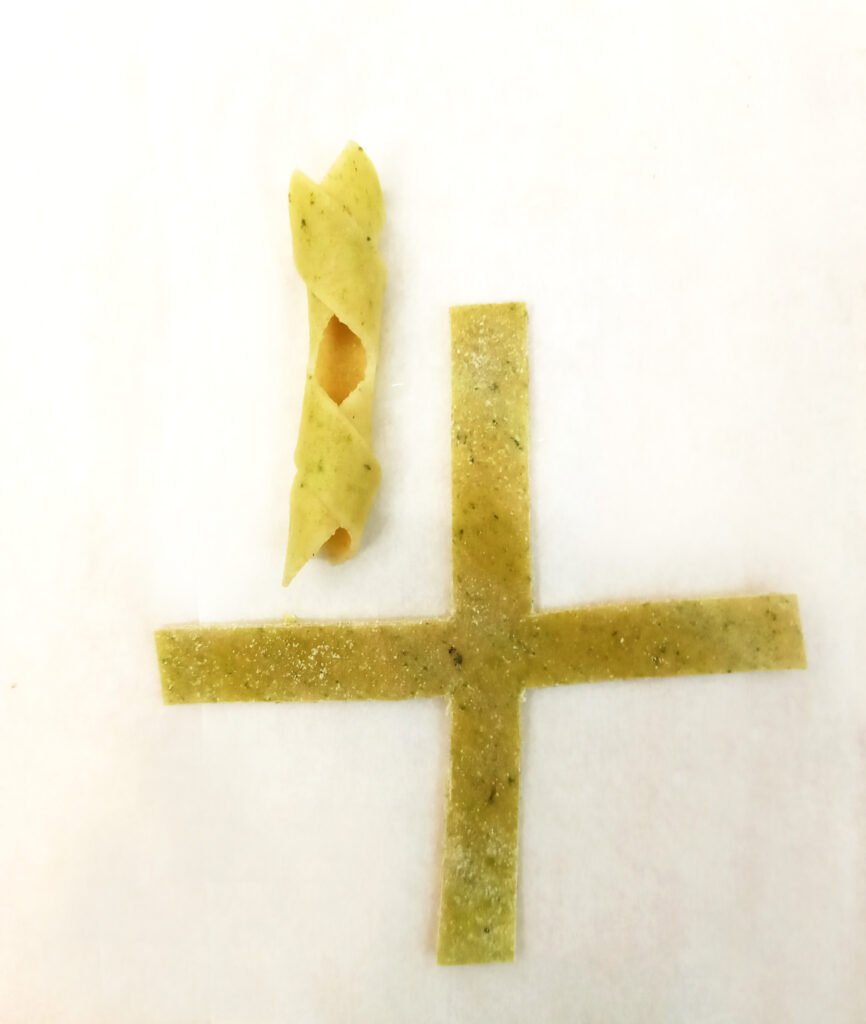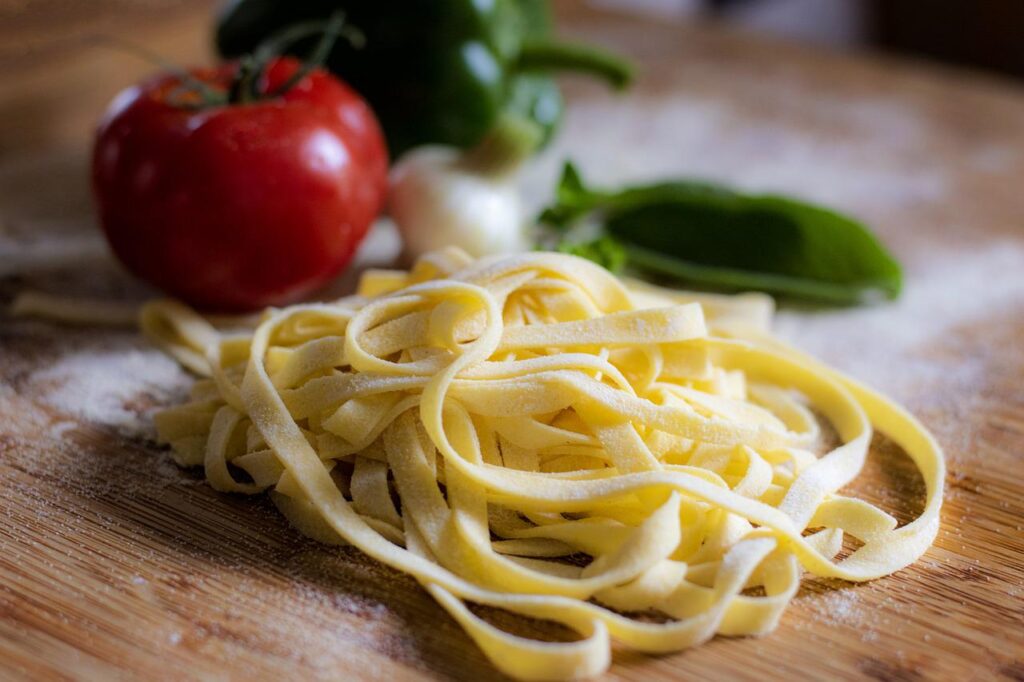Shape-shifting pasta sounds like a concept thought up in an Italian kitchen — or a science-fiction film.
Israeli researchers are making this unconventional idea a reality,crafting a technique that allows pasta to take on 3D shapes after being placed in boiling water.
The researchers – led by Professor Eran Sharon and Dr. Ido Levin of The Racah Institute of Physics, Faculty of Science at the Hebrew University of Jerusalem (HUJI) – have developed a method to manufacture dried pasta sheets, which are “preprogrammed” to mold into a 3D shape upon boiling, according to a university statement.

The technology has the potential to transform the entire pasta industry – from the process of manufacturing, transporting, and storage to the culinary experience in the kitchen.
“I think bringing dynamics and events of morphing and easily-implemented shape changes into the kitchen could change the entire environment of cooking and eating,” Sharon tells NoCamels.
This shapeshifting method aims to reduce bulky, space consuming packaging. The pasta is manufactured straight and flat-packed into low volume straight boxes. When boiled, the pasta takes on curly shapes. This saves space for transport and storage and implies savings in shipping and storage costs.
The innovation behind this game-changing approach to pasta did not come from Sharon’s kitchen, but rather, from his physics lab. With an extensive background in physics and a 19-year tenure at HUJI as a professor, Sharon has long been interested in the field of shape-shifting – or self-morphing, he tells NoCamels.

Sharon and his team pioneered the study of shape-shifting solids – a phenomenon that has since taken the interest of scientists around the globe, Sharon explains. Self-morphing is a field of physics that looks at the properties of materials and the potential to encode different shape patterns.
“This was not known as a manufacturing approach, even 15 years ago, and this is what we developed,” he says.
Calling himself “an experimentalist” by nature, Sharon and his team were interested in mimicking natural shape growth progressions. A seed pod, for example, follows a natural shape-shifting progression as it evolves into a fully-formed, dynamic flower. Sharon saw the potential to apply this physical process to other industries.
“These days, the field migrated both outside Israel to different groups across the world, but also outside physics into disciplines, like design.”
Sign up for our free weekly newsletter
SubscribeDr. Ido Levin, working alongside Professor Sharon, had a revolutionary idea. If other materials could be encoded to shape shift, why not pasta dough?
Realizing the physical properties of self-morphing had broader implications, Sharon and Levin recruited designers Liora Rosin and Maya Ben-David to perform a series of systematic tests and expand the physical properties of the pasta dough. Rosin and Ben-David worked with different doughs and discovered that a wide range of ingredients – including gluten-free dough – could adopt the transformative shape-shifting qualities.
“[Rosin and Ben-David] expanded the range of performance and also the type of dough, in terms of nutrition and other factors,” Sharon says.

The team’s discovery is exciting for researchers, as it has the potential to meet the needs of consumers and manufacturers. A recent study by British multinational packaging business DS Smith and Forbes Insights determined that 25 percent of what companies ship globally is in non-optimized packaging. Shape-shifting in packaging has the potential to save around $46 billion annually, according DS Smith.
“The global packaging industry is long overdue for innovation and Professor Sharon and Dr. Levin’s shape-shifting pasta can deliver a creative solution with a major impact,” said Dr. Itzik Goldwaser, CEO of Yissum in a press release. “The ability to reduce shipping and storage costs, while also adding carbon savings that enable a rebrand pasta as an environmentally friendly choice is a win for everyone involved. We’re excited to help this project make the jump from lab to grocery aisle in the near future.”

Employing material as a partner in shaping, Sharon tells NoCamels that the field of self-morphing will continue to have far-reaching applications.
“You don’t need to build an expensive mold that you throw away afterward. You don’t need to invest in external loading machines. You just need to smartly program the material and let it shape itself. You save labor and save energy. And then storage,” Sharon continues.
Going forward, Sharon hopes to continue to broaden the scope and impact of physics into other fields of design – in the culinary industry and beyond. By harnessing the power of self-morphing, Sharon tells NoCamels, physics has the potential to impact a wide range of fields.
“The potential of this technology is immense and I look forward to seeing it outside of the lab “wowing” consumers, and providing a positive impact to consumer and business alike.”
“It shouldn’t necessarily end with pasta, because other types of food also have these capabilities of expansion and shrinkage,” Sharon continues.
Related posts

Israeli Medical Technologies That Could Change The World

Harnessing Our Own Bodies For Side Effect-Free Weight Loss

Missing Protein Could Unlock Treatment For Aggressive Lung Cancer




Facebook comments